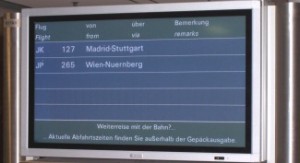Germany is have a so-called „Superwahljahr” this year. We have already had regional, mayoral and European elections, but the one that will probably be most talked about is the General Election or Bundestagswahl being held on 27th September.
At the moment, the subject occasionally pops up in the news in association with a particular policy, but otherwise the politicians seem to be avoiding it at the moment. Most of them, at least.
This is not really surprising, for the last four years Germany has had a coalition government made up of the two main political parties: CDU (in alliance with the CSU) and the SPD. If they start criticising the other party too soon, it may rock the coalition boat and cause a rift between them.
Apart from that, both sides have had an influence on most of the policies, so it is difficult for one side to criticise the other for something that they themselves also voted in favour of.
Which leaves the smaller parties like the FDP, Greens and Linke to give the critical interviews, but these are less influential parties that are unlikely to get a majority on their own and instead might form a coalition with one of the larger ones. So even they have to tread carefully, so as not to upset potential coalition partners.
All in all it means that many people are just not interested in national politics as the chance to make a difference is very small at the moment.
With just over three months to go until the election, it will be interesting to see how long in advance the coalition parties will start their campaigns.


